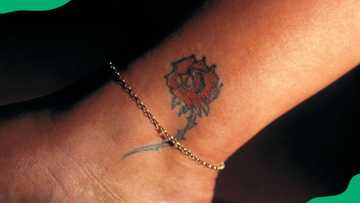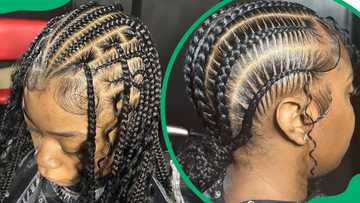What is permanent jewellery? Pros, cons, longevity, and costs
Permanent jewellery is a growing trend in modern fashion and styling. It is loved for its minimalist look and unique appeal, but is it worth it? Keep reading for more on the pros and cons of getting permanent accessories and how much you can pay to get one in South Africa.
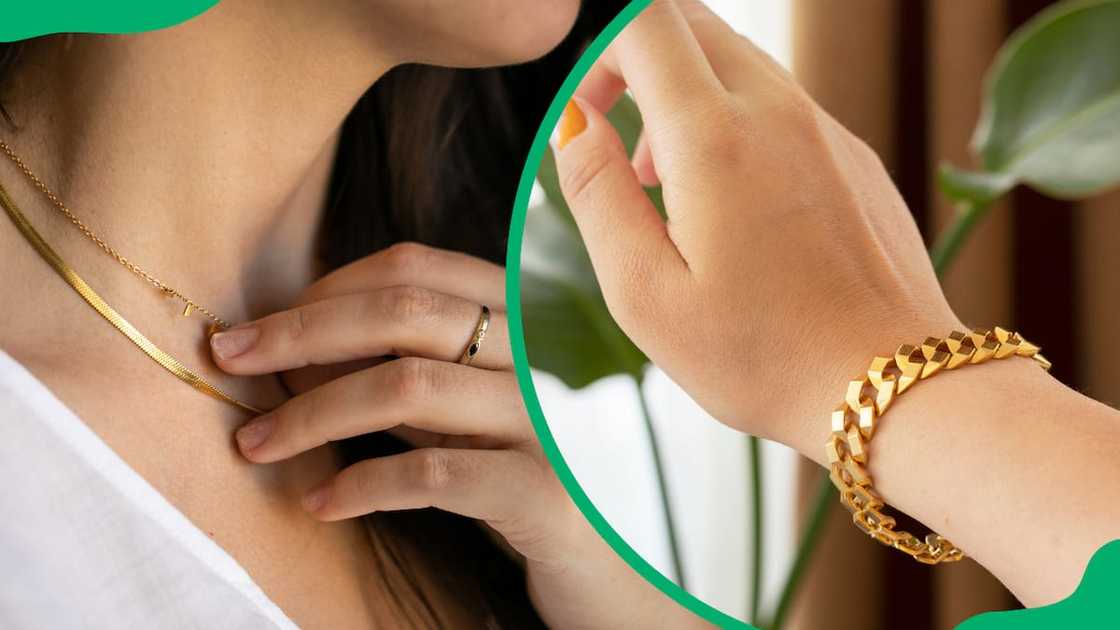
Source: Getty Images
TABLE OF CONTENTS
- Permanent jewellery is a growing trend in modern fashion and styling. It is loved for its minimalist look and unique appeal, but is it worth it? Keep reading for more on the pros and cons of getting permanent accessories and how much you can pay to get one in South Africa.
- What is permanent jewellery?
- Types of permanent jewellery
- What is the point of permanent jewellery?
- Is permanent jewellery painful?
- How long does permanent jewellery last?
- How much does permanent jewellery cost?
- What are the disadvantages of permanent jewellery?
- Can you get an MRI with permanent jewellery?
The concept of permanent jewellery has been around for centuries, but the first known piece dates back to 1969 when Aldo Cipullo designed the Cartier Love Bracelet. The bracelet was designed with a locking mechanism that required a unique screwdriver to open.
What is permanent jewellery?
Permanent jewellery refers to a customized piece that is welded together instead of being secured with a clasp. Unlike regular jewellery, which can be taken off and put back on, permanent jewellery is designed to stay on your body 24/7. You do everything with the accessory.
How does permanent jewellery work?
To get permanent jewellery, you must make an appointment to have it fitted by an expert. You will be required to choose a piece that you like which can have extra charms or just plain.
A professional will measure the perfect fit and then permanently join the ends through welding. The ends are joined while the piece is on your body.
According to Catbird founder Rony Vardi, customers usually go for a slightly tighter fit since the piece can stretch over time (via Byrdie).
You'll sit with one of (our) trained in-house jewellers to review your chain and charm options. Our jeweller will then snip to size that speaks to you and custom fit it to your wrist at different lengths so that you can decide on the fit that is best for the look you'd like...Most of our customers will go for a slightly tighter fit as the 14k chain will very lightly stretch over time.
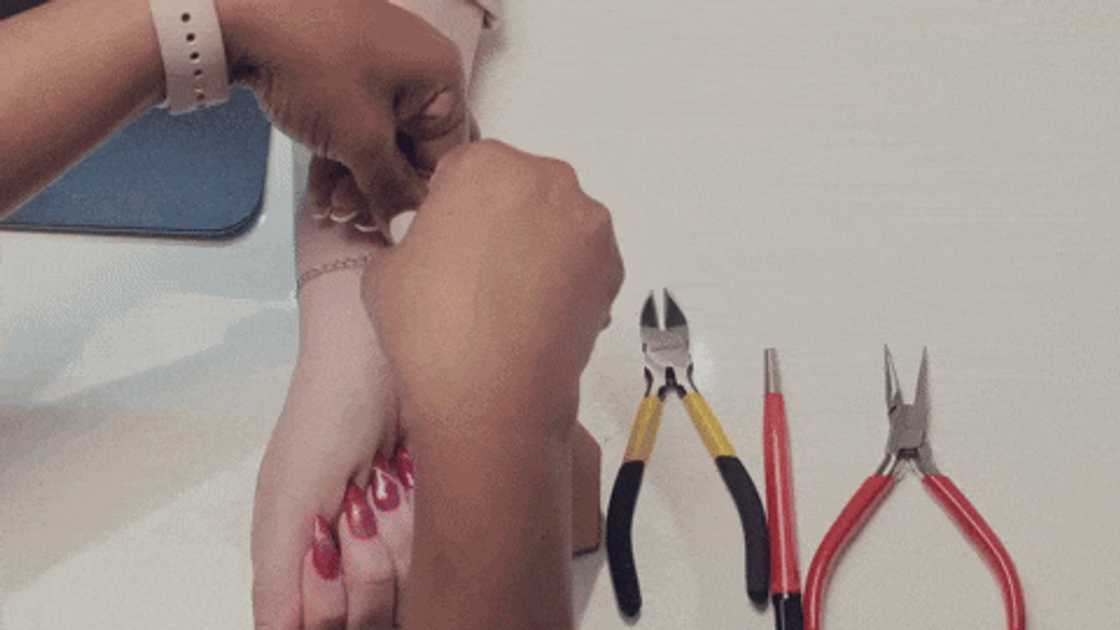
Source: UGC
Types of permanent jewellery
Bracelets are the most common pieces that people go for when looking for a long-lasting accessory. Anklets, earrings, and necklaces are also widely designed for long-term wear. Some people get permanent rings, often wedding bands, to wear them for life.
What is a permanent bracelet?
A permanent bracelet is a bracelet that is welded onto the wearer's wrists and does not have a traditional clasp or opening. It is also referred to as an infinity bracelet or a forever bracelet.
What is a permanent necklace?
A permanent necklace is a custom-fitted necklace that is welded directly around the wearer's neck. You cannot remove it unless you cut it off.
What is a permanent ring?
A permanent ring is a customized ring that is welded on the wearer's finger. It is intended to stay on long-term.
What is permanent jewellery made of?
Permanent jewellery is typically made from material that is durable, resistant to tarnishing, and not magnetic. When choosing the accessory, you should also consider skin sensitivity and aesthetic preference. Ideal materials include the following;
- 14K gold: This type of gold consists of around 58% pure gold mixed with other metals like silver and copper. It is durable with hypoallergenic properties.
- 18K gold: This metal has 75% pure gold mixed with other metals. It has hypoallergenic properties and is durable but is not as hard as 14K gold.
- Solid sterling silver: The metal is popular for its strength and affordability, although it may require occasional polishing to maintain its shine
- AA-AAA quality natural bezel set stones: These materials are among the highest-quality grades available. The bezel setting protection ensures durability and minimizes the risk of damage.
- Titanium: The metal is extremely durable, lightweight, and hypoallergenic.

Source: UGC
What is the point of permanent jewellery?
People wear permanent accessories for various reasons, according to jeweller Rony Vardi, founder of Catbird (via Time).
We find our customers love the Forever Bracelets to both mark special occasions and to add a seamless, easy piece of fine jewellery to their everyday.
Here is a highlight of why there is a growing trend of people getting permanent jewellery;
- Marking special milestones like an anniversary or the birth of a child with a lasting piece of jewellery
- As a romantic gesture for a couple to symbolize love and commitment
- To represent sentimental value and enduring relationships between friends or family members
- A style statement for those who want a seamless and minimalist accessory
- For convenience because it requires less maintenance
- Durability makes the jewellery appealing to those who want an accessory that does not wear out
Is permanent jewellery painful?
Getting the accessory fitted onto your body is a quick and painless process. The welding only touches the jewellery, not your skin, ensuring that the experience is comfortable, according to Love Saro co-founder Sacha Jarmon (via Real Simple).
We use what is called a microscopic arc welder, which synthesizes electricity and regulated argon gas to very precisely weld our cut links back together...For most chain weights, there is no heat or risk of burning the skin—it is a very quick, safe, and painless process that is safe for everyone.
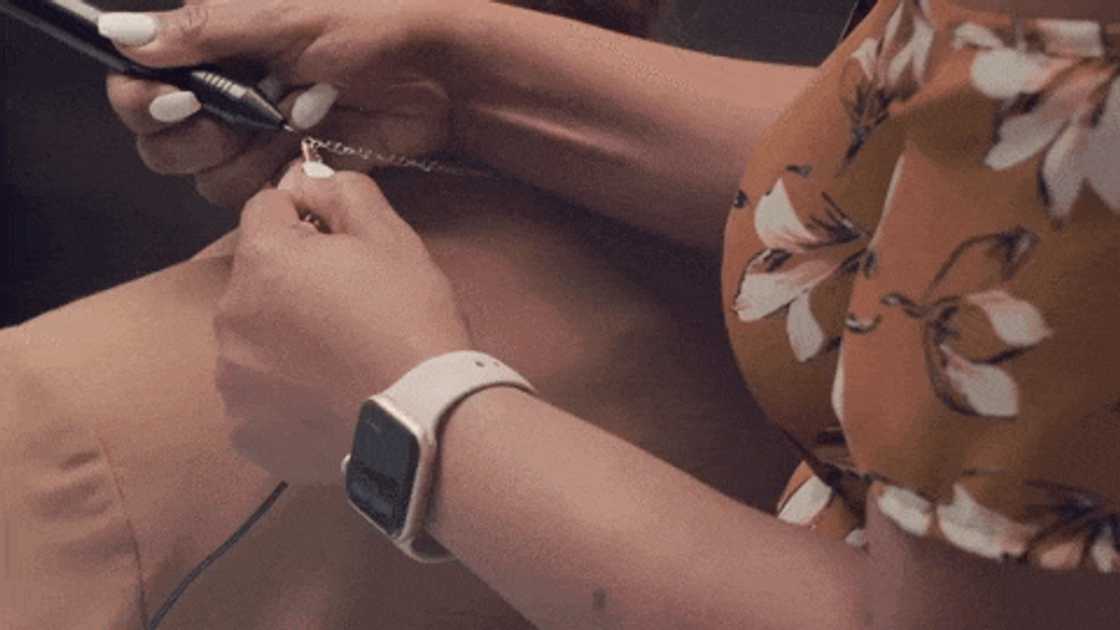
Source: UGC
How long does permanent jewellery last?
Permanent jewellery is designed to be a long-lasting accessory if proper care is taken. It should be able to withstand daily wear, but it is not immune to damage from physical impacts.
Regular cleaning and avoiding exposure to harsh chemicals will help preserve the accessory's condition and shine. Remember that longevity depends on factors like lifestyle, maintenance, and material used.
Can you remove permanent jewellery?
The accessory is removable. It can be cut off at any time using a pair of scissors at the spot where the jewellery is welded together. You can also cut using nail clippers or wire cutters. Remember that the piece can be reattached in the future, in case you want it again.
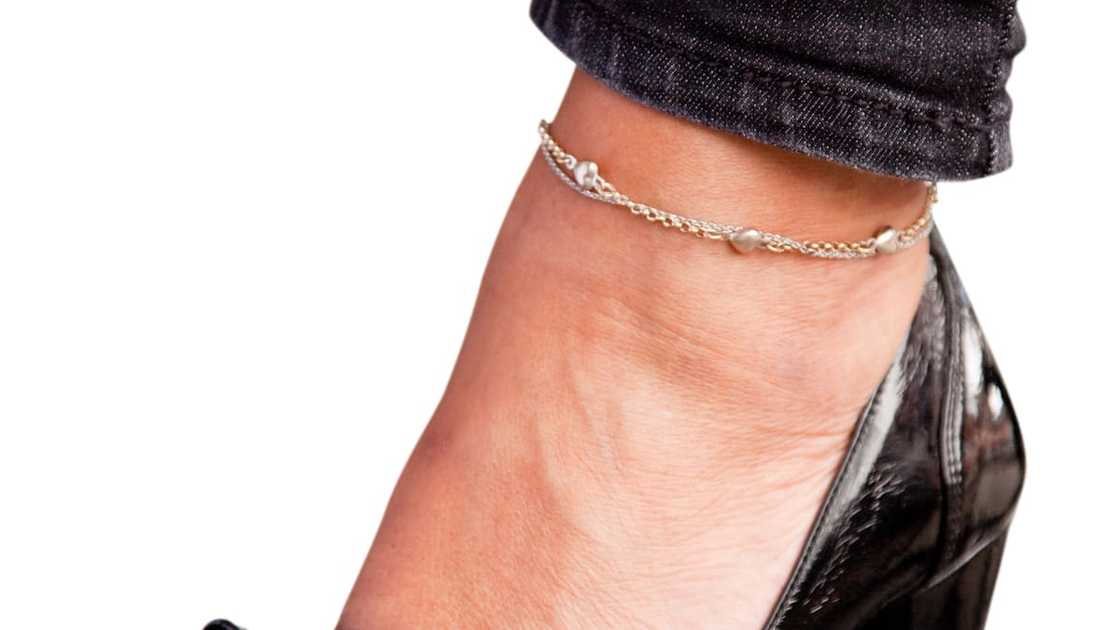
Source: Getty Images
How much does permanent jewellery cost?
The price varies with the piece you have chosen, the material, and the boutique. At Beaudell Diamonds in South Africa, you can find a forever bracelet from R450 up to over R3,000.
At Mark of a Jewellery store, sterling silver pieces cost between R350 to R650, 4Kt gold-filled costs between R400 to R850 while solid 9k gold pieces can be purchased at a cost of between R1,950 to R3,450.
What are the disadvantages of permanent jewellery?
It is crucial to understand the pros and cons of permanent jewellery before committing to having it welded on your body. Here are some of the disadvantages associated with the accessory;
- There is limited versatility because once a piece is chosen and welded, it cannot be easily swapped out for another piece. This limits fashion flexibility.
- The piece can cause discomfort if it is too tight or causes friction.
- The accessory is likely to gather dirt, bacteria, and sweat, leading to hygienic problems, which can result in skin reactions and sometimes infections.
- If you gain or lose weight, the accessory will not fit properly. You will need to pay a fee to have it replaced or adjusted.
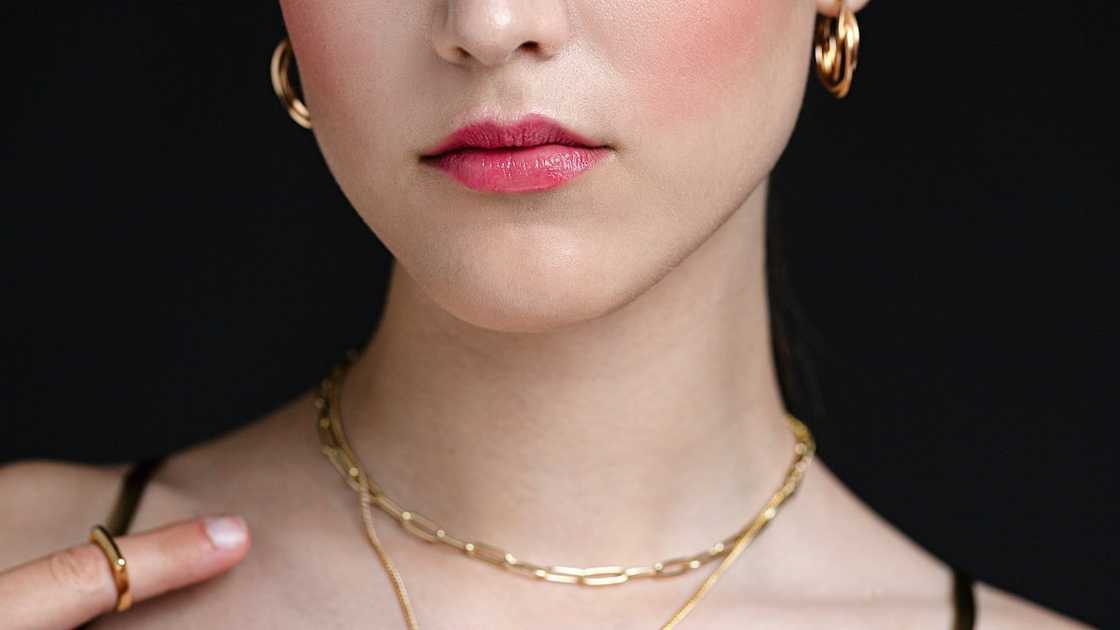
Source: Getty Images
Can you get an MRI with permanent jewellery?
You can get an MRI with permanent jewellery since the accessory is not magnetic. However, you may need to remove it if the physician requests, then reattach it after the procedure. Always ensure your MRI technician is aware that you have permanent accessories on.
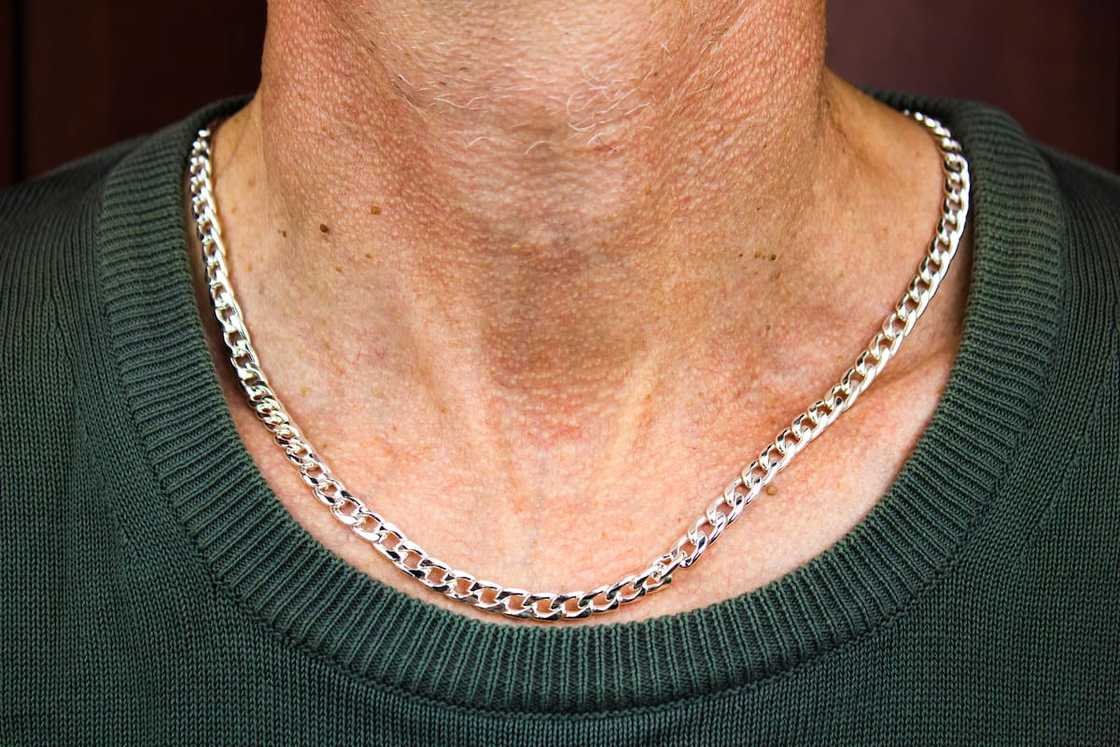
Source: Getty Images
Now that you know all about permanent jewellery, you can decide whether it is a suitable styling choice for you. Ultimately, whether you get it as a symbol of commitment or a statement of personal style, a permanent accessory can be a meaningful addition to your jewellery collection.
DISCLAIMER: This article is not sponsored by any third party. It is intended for general informational purposes only and does not address individual circumstances. It is not a substitute for professional advice or help and should not be relied on to make decisions of any kind. Any action you take upon the information presented in this article is strictly at your own risk and responsibility.
READ ALSO: How to clean leather: Essential tips for maintaining your items
Briefly.co.za shared essential tips to help you clean and maintain leather. It is usually challenging to clean the material while taking care to preserve its natural shine and ensure durability.
Leather can be cleaned and conditioned with several household cleaning products. Check the article for more on how to take care of your leather items.
Source: Briefly News



